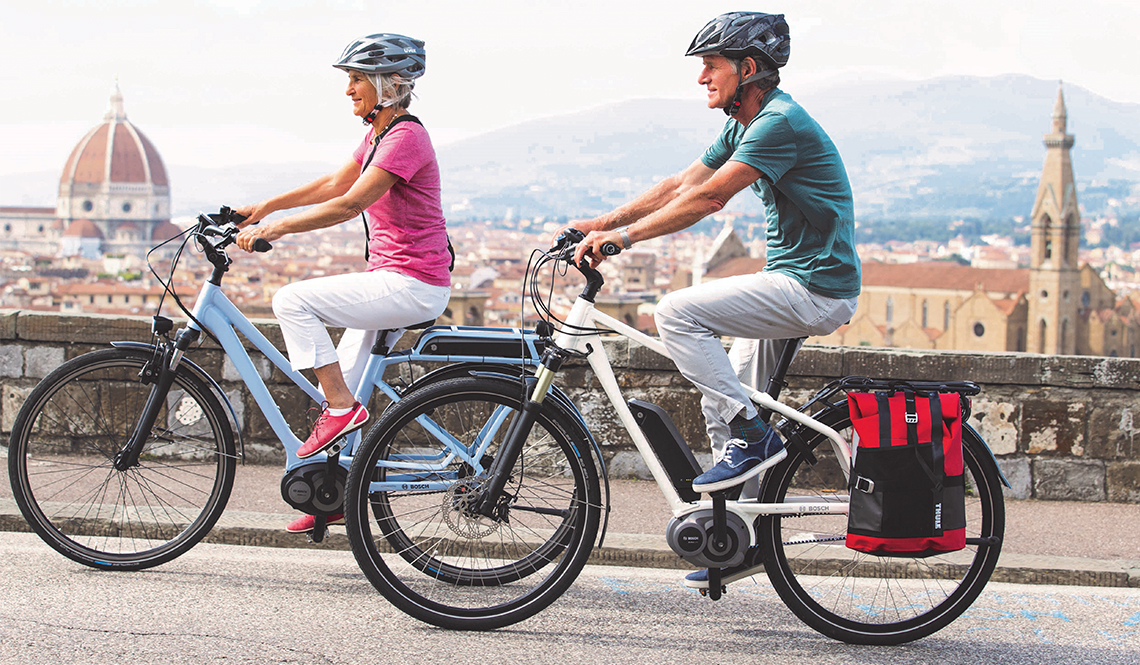On this topic, I did my own little experiment about my own regular bike versus e-bike commute.
I purchased an e-bike two months ago: a 20 mph maximum pedal assist, no throttle. Health stats, time, and speed were obtained pre- and post-purchase using my Apple Watch Workout app. My daily 12-mile round trip commute is relatively flat and mostly on a bike path, but requires to cross several busy streets. There is a 80-foot elevation drop on the way to work and 80-foot rise on the way back. This small change in elevation creates a significant difference. Before I went electric, I rode two different bikes: a heavier touring bike with fenders and a lighter racing style without. No spandex in either case.
DOWNHILL DATA
Heart rate: 105 bpm regular bike/99 bpm e-bike. This is the average over the ride, not peak. Six bpm less on the e-bike.
Active calories: (168 regular bike/168 e-bike). Same energy output.
UPHILL DATA:
Heart rate: 107 bpm regular bike/93 bpm e-bike. A whopping 14 bpm on the e-bike.
Active calories: 192 regular bike/219 e-bike. Seems counter-intuitive to me. Perhaps the watch accelerometer is measuring for the fact that I am pedaling faster because I want to get home.
OTHER STATS:
On the e-bike, I average 2.5 mph faster downhill and 3.5 mph faster uphill. I stop for traffic lights.
E-bike commute averages 5m 30s faster downhill and 9m 6s faster uphill.
Commute time is about 23m both ways door-to-door, the same as driving my car, finding a parking spot, and walking, for which, I estimate a combined heart rate of 80 bpm and 60 calories burned.
With the e-bike, I have yet to be tempted to drive my car. So, that's more exercise there.
I agree with TForan that it is harder to get my HR to 120. It does get to within 60% of my maximum HR (not hard to do at my chronological age). Still, the easier bike commute allows me to engage in my main form of aerobic exercise, which is running. Even after a hard run, electric power allows me to bike on down the road for commuting.
For me: advantage E-bike.
